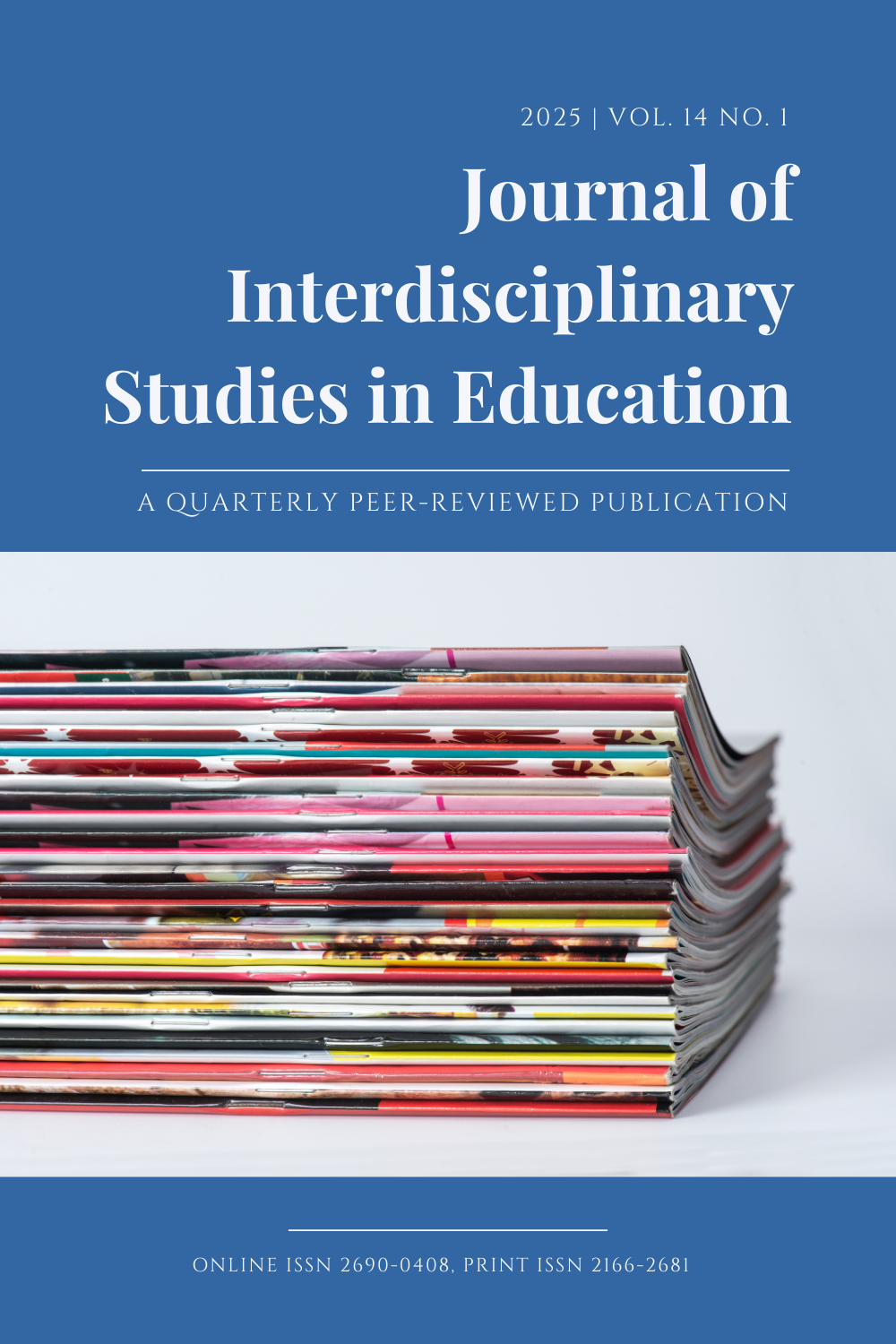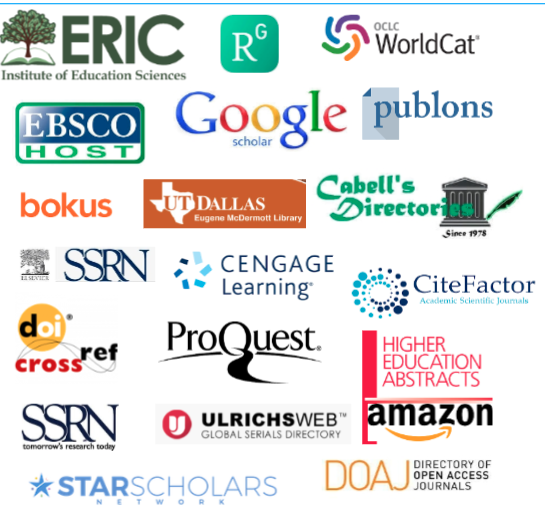The reading seed programme (RSP)'s efficacy in fostering toddlers' reading habits in early childhood literacy
DOI:
https://doi.org/10.32674/kb8vxr06Keywords:
Reading Seed Programme, Early Childhood, Literacy, Toddlers, Reading HabitAbstract
The Reading Seed Programme (RSP), an in-house literacy program inaugurated by Sarawak's State Library (PUSTAKA Negeri Sarawak, Malaysia), has the potential to become the country's primary literacy initiative, particularly in terms of fostering a reading culture. The purpose of this paper is to empirically establish the reliability of survey measures as well as the feasibility of this toddler literacy program. The findings revealed that RSP capable enculturates effectively and has a significant positive impact on toddlers' reading ability. Nonetheless, the early childhood reading literacy program must consider each learner's unique learning style, incorporate updates or monitoring systems, improve training, develop a strategic plan outlining RSP outcomes, and clearly communicate the program's attitudinal components in relation to the desired results.
Downloads
References
Akubuilo, F., Okorie, E. U, Onwuka, G., & Uloh-Bethels, A. C. (2015). Reading readiness deficiency in children: Causes and ways of improvement. Journal of Education and Practice. 6 (24), 38-43.
Bronny, L. N. (2016). The Reading Habits Among Library Users in Rural and Urban Areas of Sarawak, Malaysia, Sarawak State Library, Malaysia. The Asian Conference on Society, Education & Technology 2016 Official Conference Proceedings. http://25qt511nswfi49iayd31ch80-wpengine.netdna-ssl.com/wp-content/uploads/papers/acset2016/ACSET2016_33259.pdf [retrieved 16th September 2020]
Bus, A. G., van IJzendoorn, M. H., & Pellegrini, A. D. (1995). Joint book reading makes for success in learning to read: A meta-analysis on intergenerational transmission of literacy. Review of Educational Research, 65, 1–21. http://dx.doi.org/10.3102/00346543065001001
Bus, A. G., Takacs, Z. K., & Kegel, C. A. T. (2021). Affordances and limitations of electronic versus print picture books for toddlers’ story comprehension and vocabulary. Reading Research Quarterly, 56(1), 69-85. https://psycnet.apa.org/doi/10.1016/j.dr.2014.12.004
Cronbach, L. J. (1951). Coefficient alpha and the internal structure of tests. Psychometrika, 16(3), 297-334. http://dx.doi.org/10.1007/BF02310555
DeBaryshe, B. D. (1993). Joint picture-book reading correlates of early oral language skill. Journal of Child Language, 20, 455-461. http://dx.doi.org/10.1017/S0305000900008370
Formby, S. (2014). Children’s Early Literacy Practices at Home and In Early Years Settings: Second Annual Survey of Parents and Practitioners. National Literacy Trust. https://files.eric.ed.gov/fulltext/ED560665.pdf [retrieved 16th 21st July 2020]
Gaur, A. S., & Gaur, S. S. (2006). Statistical methods for practice and research: A guide to data analysis using SPSS. Sage.
Hutton, J.S., Horowitz-Kraus, T., Mendelsohn, A.L, DeWitt, T. & Holland, S.K. (2015). Home Reading Environment and Brain Activation in Preschool Children Listening to Stories. Paediatrics, 136(3), 466-478. http://dx.doi.org/10.1542/peds.2015-0359
Hwang, G. J. & Yen, C. H. (2019). Effects of interactive e-books on young children's English vocabulary learning and enjoyment. Journal of Educational Technology & Society, 22(2), 211-224. https://www.jstor.org/stable/26452802
Jia, Y., & Luo, Y. (2021). Parent-led book-sharing intervention improves preschoolers' vocabulary and language skills: A randomized controlled trial. Journal of Research in Reading, 44(2), 304–324. https://doi.org/10.1111/1467-9817.12306
Joseph, L. M. (2008). Best practices on interventions for students with reading problems. Best Practices in School Psychology, 4, 1163-1180.
Joseph, L. M. (2002). Best Practices in Planning Interventions for Students with Reading Problems. In A. Thomas & J. Grimes (Eds.), Best practices in school psychology IV (pp. 803–816). National Association of School Psychologists.
Krejcie, R. V., & Morgan, D. W. (1970). Determining sample size for research activities. Educational and psychological measurement, 30(3), 607-610. http://dx.doi.org/10.1177/001316447003000308
Majzub, R. & Kurnia. K. (2010). Reading readiness amongst preschool children in Pekanbaru, Riau. Procedia Social and Behavioural Sciences, 9, 589-594. https://doi.org/10.1016/j.sbspro.2010.12.202
Malaysia Literacy Rate 1980-2020. accessed 18th May, 2023 https://www.macrotrends.net/countries/MYS/malaysia/literacy- rate#:~:text=Malaysia%20literacy%20rate%20for%202018,a%204.43%25%20increase%20fro m%202000.
MOE (2020), Pengenalan: Program Pemulihan Khas. https://www.moe.gov.my/en/special-education/program-pemulihan-khas/pengenalan [retrieved 16th September 2020]
Mohini, M.; Roshanida, A. R.; Lee, C. T.; Haslenda, H.; Hasmerya, M.; Noor Sharliana, M. N.; Siti Nazrah, Z.; Siti Marsilawati, M. E., & Nur Fazirah, J. (2012). Reading Behaviours of Students in Kolej Datin Seri Endon (KDSE). International Journal of Educational Management, 26(4), 381-390. https://doi.org/10.1108/09513541211227782
Norseha Unin, Abdul Rahman Saili & Rasidah Mahdi (2015). Opinion on Reading among Library Users of Pustaka Negeri Sarawak in Kuching and Miri. https://www.researchgate.net/publication/331382988_Opinion_on_Reading_among_Library_Users_of_PUSTAKA_Negeri_Sarawak_in_Kuching_and_Miri [retrieved 9th September 2020]
Nunnally, Jum C. (1967), Psychometric Theory, 1st ed., New York: McGraw-Hill. (1978), Psychomet.
Pallant, J. (2020). SPSS survival manual: A step-by-step guide to data analysis using IBM SPSS. Routledge.
Rajaratnam, R. (2013). For the Love of Reading! New Strategies to Engage the Next Generation of Readers. IFLA WLIC 2013. http://library.ifla.org/71/1/105-rajaratnam-en.pdf [retrieved 20th July 2021]
Rozaimie, A. (2024). The Dynamic of Demographic Characters on the Reading Seed Program of Pustaka Negeri Sarawak. Southeast Asia Early Childhood Journal, 13(1), 34–69. https://doi.org/10.37134/saecj.vol13.1.3.2024
Tavakol, M., & Dennick, R. (2011). Making sense of Cronbach's alpha. International journal of medical education, 2, 53. https://doi.org/10.5116/ijme.4dfb.8dfd
Teh, C. B. S. (2013). Malaysia’s reading habit. Malaysians-reading-habit UNICEF. (1995). Convention on the Rights of the Child in Malaysia. http://christopherteh.com/blog/ [retrieved 8th June 2022]
Van Kleeck, A., Gillam, R. B., Hamilton, L., & McConnell, S. R. (2017). Shared book reading: When and how questions matter. Journal of Speech, Language, and Hearing Research, 60(9), 2483-2499. doi:10.1044/2017_JSLHR-L-16-0270
Xu, Y., Wang, D., Collins, P., Lee, H., & Warschauer, M. (2021). Same benefits, different communication patterns: Comparing Children's reading with a conversational agent vs. a human partner. Computers & Education, 161, 104059. http://dx.doi.org/10.1016/j.compedu.2020.104059
Xu, J., Zhang, S., & Yang, J. (2021). The effects of parental involvement on children's reading outcomes: A meta-analysis. Journal of School Psychology, 87, 95–107. https://doi.org/10.1016/j.jsp.2021.05.007
Additional Files
Published
Issue
Section
License
Copyright (c) 2024 Awang Rozaimie, Norseha Unin, Aiza Johari, Abdul Ismail

This work is licensed under a Creative Commons Attribution-NonCommercial-NoDerivatives 4.0 International License.







